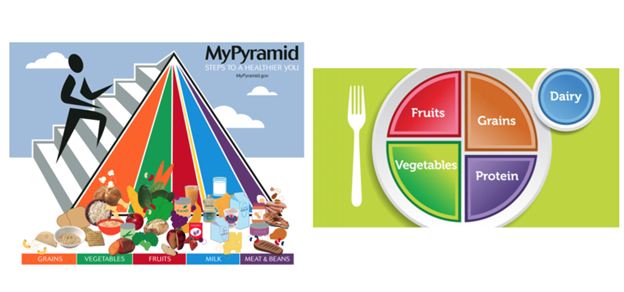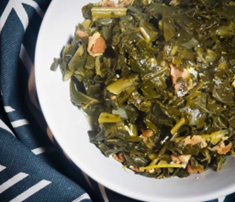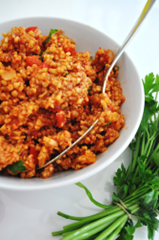You Don't Have to Abandon Your Culture for "Healthy" Eating!
Blog written by Living Well's nutrition Peer Counselor Veronica Gomez.
We always hear about eating “healthy” in the context of the American diet.
When we think of changing our eating habits, the average student will envision a diet completely different than what they are accustomed to. Suddenly, this student has to cut out all cultural foods and abide by a diet that has been pushed by mainstream white media. While media refers to modern television, Tik Tok, Instagram etc., institutions such as hospitals and schools will perpetuate this way of thinking as well. College students born in America would have been raised with MyPyramid. This pyramid shaped the lunch programs a lot of students weren't fond of, and it served as a guide for hospital meal plans as well. While the current dietary guidelines infographic, MyPlate, is more inclusive and immersive, a lot of college students today live on with the little nutrition education they were exposed to before college.

Alt Text: [ A graphic from MyPyramid (left) listing five different food categories (grains, vegetables, fruits, milk, and meat/beans) and a graphic from MyPlate (right) showing a plate that is 1/4 grains, 1/4 fruits, 1/4 protein, and 1/4 vegetables.]
What is a “healthy diet”?
The recurrence of quoting the word “healthy” is due to the ambiguity tied to what it means to eat healthy. This ambiguity should instead be viewed as flexibility, which is exactly what our diets should be— flexible.
Foods like sweet potatoes, cauliflower-anything (nuggets, wings, rice), rice crackers, and chicken breast are idealized as healthy food staples. Students are encouraged to add these foods into their diets, and are pressured to remove cultural foods such as naan, tortillas, rice, or any potato dishes. But the flexibility of “healthy” eating does not suggest foods should be cut out, but rather, students should optimize their current diets. This especially means, students should NOT swap their cultural diets for an unsatisfying palette. Students should be encouraged to maintain whatever diets work for them, with the goal of adding as many nutrient-packed foods as possible. Contrary to what we have been told, food from our culture can be, and often is, very nutritious—and good for the soul.
Below are 4 cultural foods that are nutrient-packed!
- Mexican Food Staple: Nopales
High in Dietary Soluble Fiber (lowers glycemic responses in diabetic patients!)

- Indian Food Staple: Lentils
Rich in protein & iron

- African-American Food Staple: Collard Greens
Rich in potassium (improves blood pressure) & zinc (for a strong immune system)

- Mediterranean Food Staple: Bulgur
A tasty whole grain packed with dietary fiber (great for your heart and bowel health)

Relevant Resources:
- MyPlate.gov is an interactive page which helps the reader explore a truly diverse selection of foods for each group on the plate.
https://www.myplate.gov/eat-healthy/grains
2. The food and agricultural organization of the united nation (FAO) holds a library of food infographics pertaining to over 100 countries. Such infographics can be used to supplement the current MyPlate in schools/hospitals where the minority is the majority.
https://www.fao.org/nutrition/education/food-dietary-guidelines/home/en/
